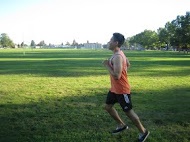A torn meniscus is one of the most common injuries of the knee joint. Activities that involves twisting or rotating of the knee, especially when placing pressure of the full weight can result to a torn meniscus. A torn meniscus causes swelling, pain and stiffness and difficulty extending the knee completely.
[youtube url=”https://www.youtube.com/watch?v=_nCUA9Svsjk”]Symptoms of a torn meniscus
- When there is immobility of the knee for a couple of minutes and trying to bend it, a snapping sound can be heard which is normal, but bending it for several times and snapping sound can still be heard, it might be a symptom of knee problems.
- Swelling and stiffness of the affected area.
- Pain when moving the affected area.
- Pain when rotating and twisting the knee.
Treatment

- Take plenty of rest especially the affected area. Avoid performing activities during the first 24-72 hours after the injury. Adequate rest is required for proper healing as well as prevent the condition from worsening.
- Wear a splint or bandage to keep the affected area in place and prevent unnecessary movements that can worsen the condition.
- Wrap the injured area using a moist towel for at least 15-20 minutes at a time with 2-3 hour intervals on the first 24-72 hours after the injury. The cold temperature constricts the blood vessels and cause a reduced flow of blood in the area. Compression stimulates the flow of lymph fluid which supplies essential nutrients to the injured tissue surrounding the injury. The lymph fluid also eliminates waste products from the cells and body tissues which is essential during regeneration of the tissue.
- Elevate the affected area above the level of the heart to lessen the swelling of the affected area. Continuous elevation of the affected area ensures increased circulation of blood and fast healing. When sitting or lying down, prop the knee up with a couple of pillows.
- Take the prescribed over-the-counter pain medication to lessen the pain.
- Take over-the-counter non-steroidal anti-inflammatory drugs (NSAIDs) such as ibuprofen, aspirin and naproxen to lessen the pain and inflammation.
- Once the swelling of the affected area is minimized, seek the help of a physical therapist for some rehabilitation exercises to increase the strength of the muscles that surrounds the knee, support and preserve the stability of the joints and restore normal range of motion.
Tips
- Minimize too much twisting or pivoting to prevent the likelihood of ending up with a torn meniscus. Avoid playing contact sports that requires vigorous use of the knees.
- Bones becomes weak and development of issues with the knee is normal and part of the aging process.
